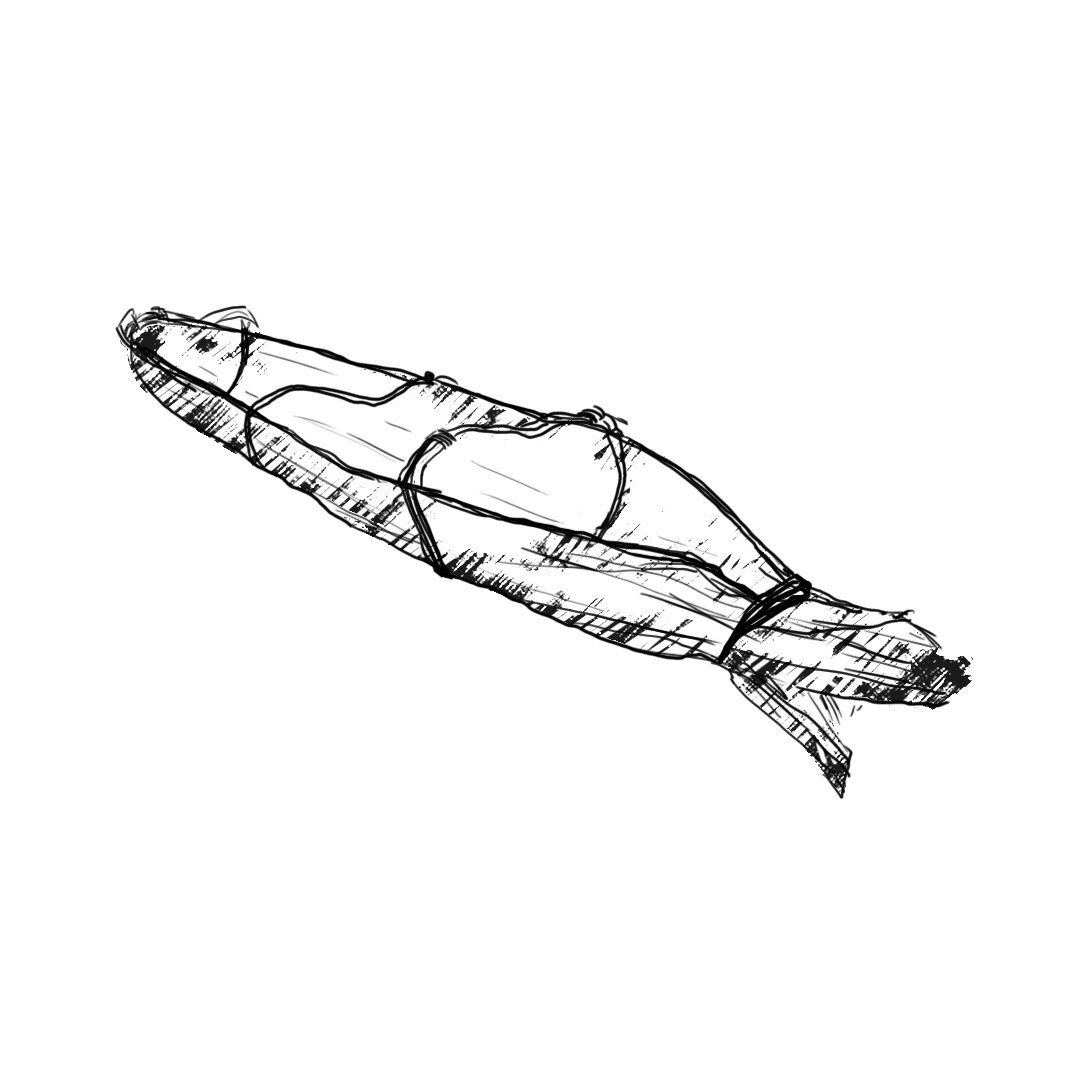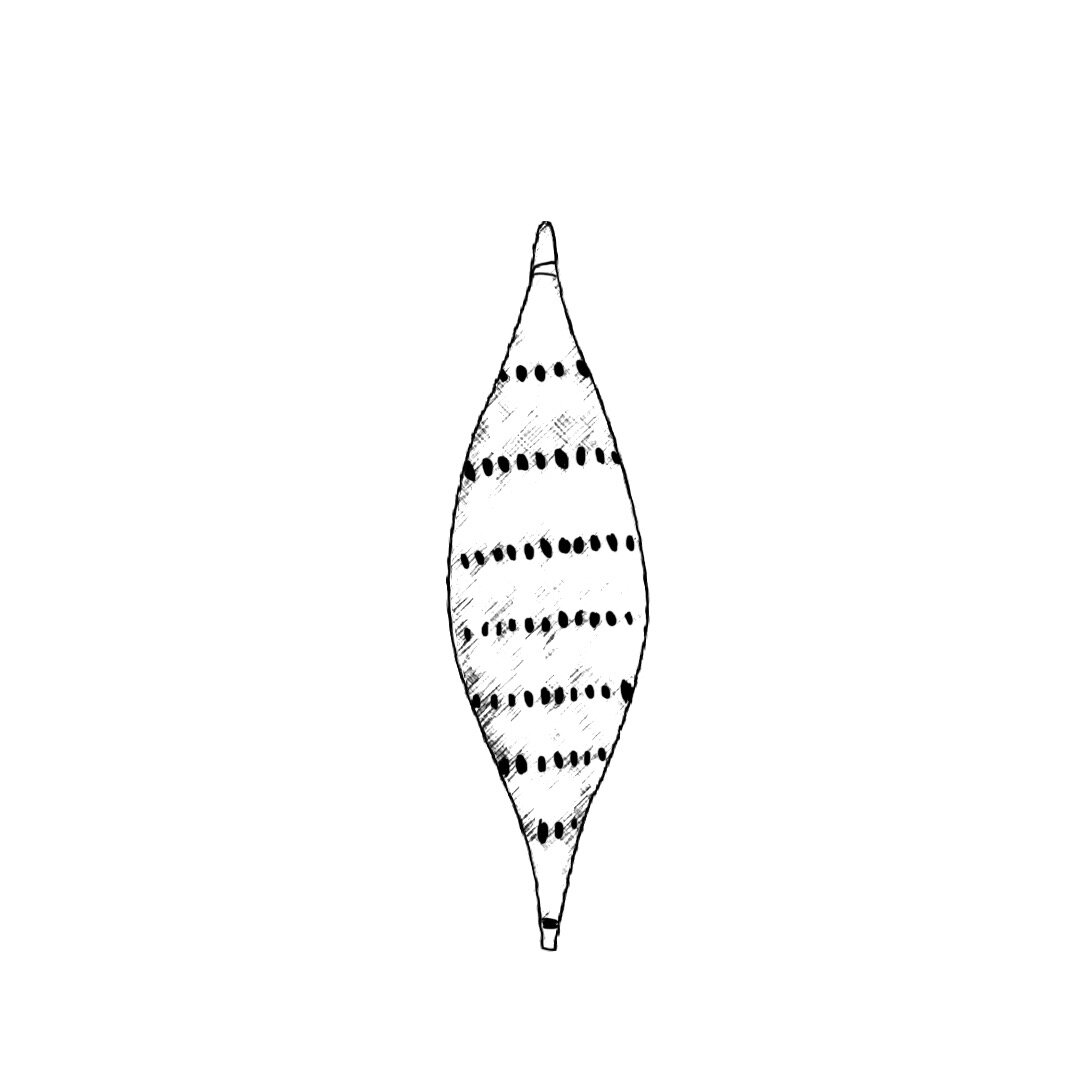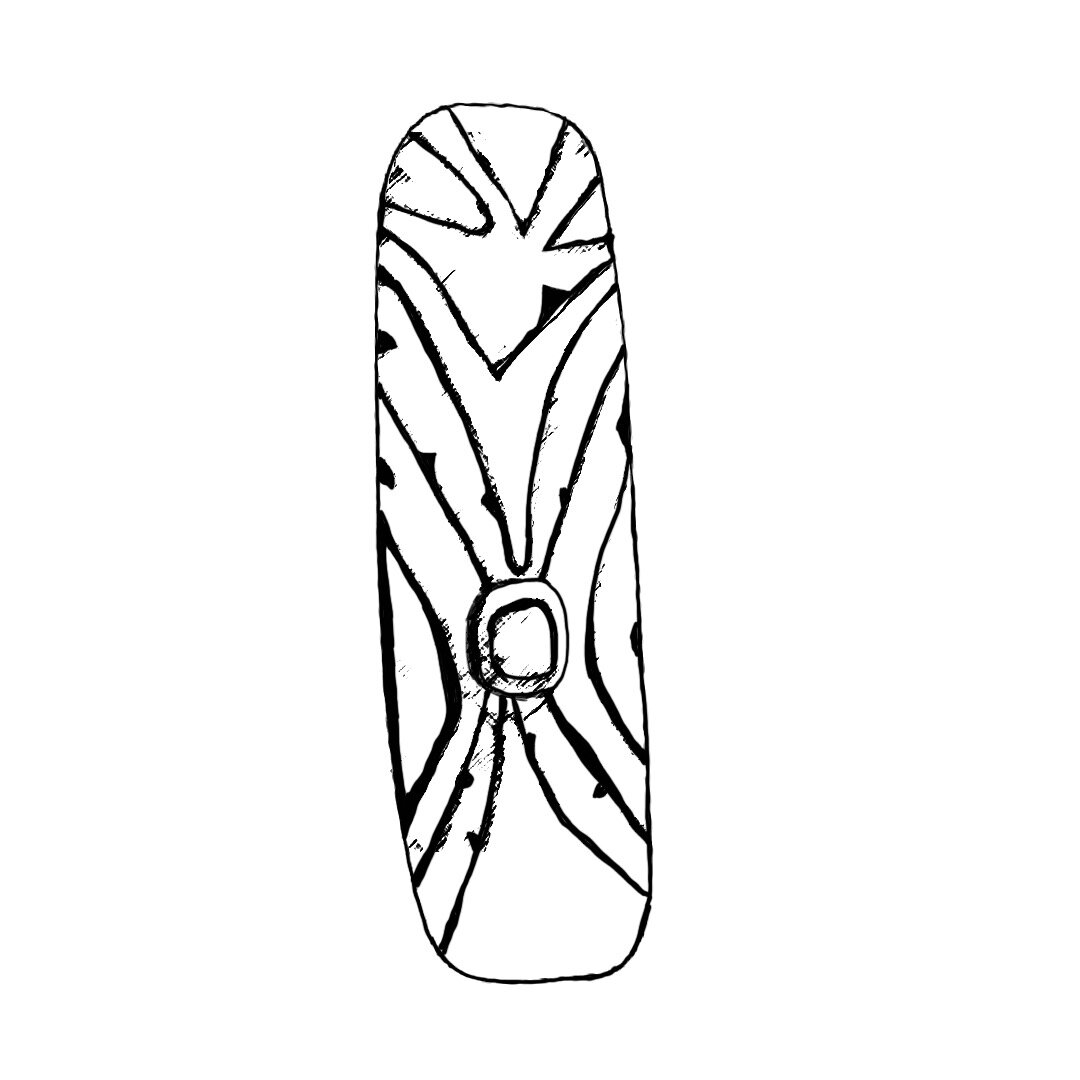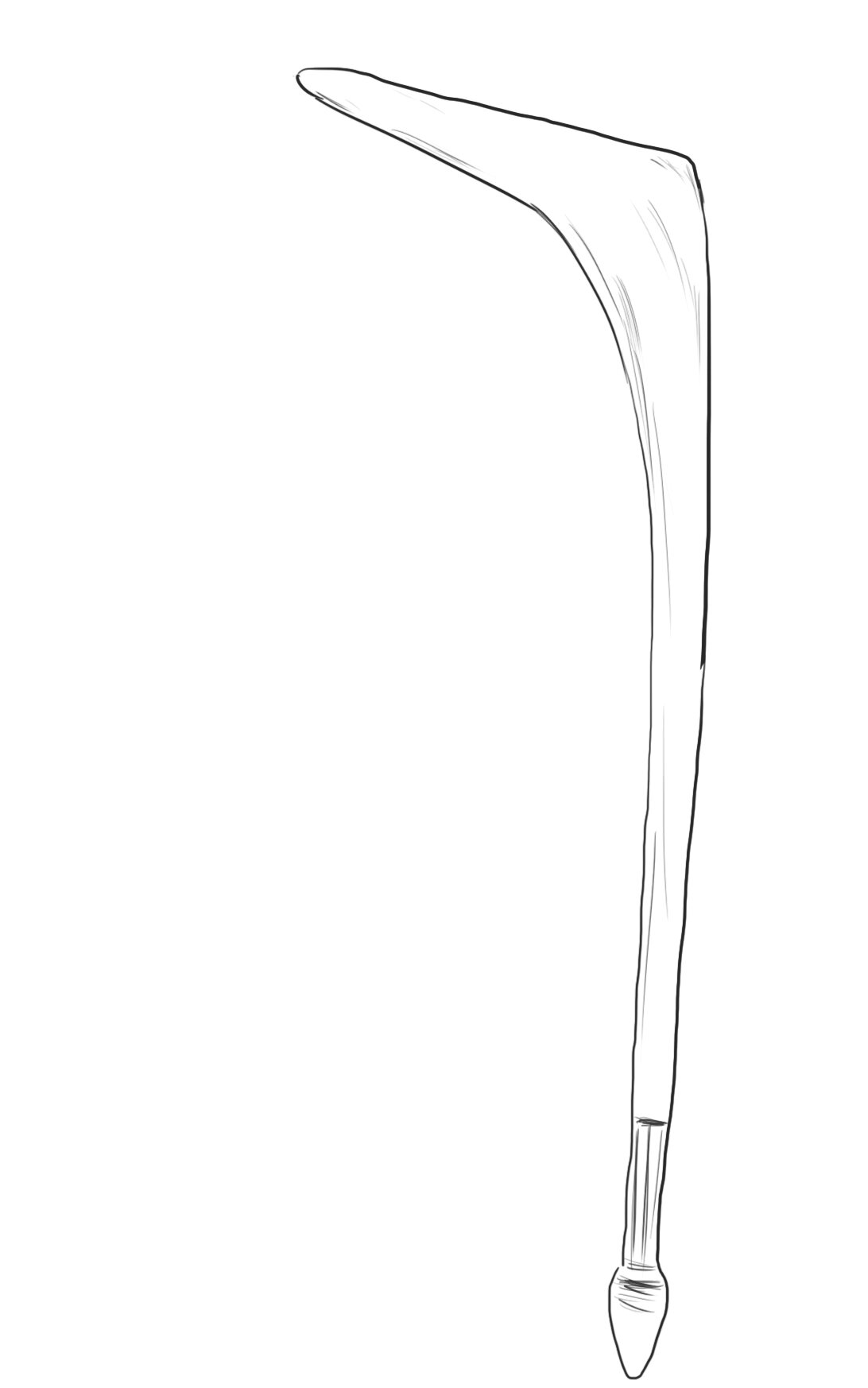A SCARRED PAST
Madeleine Dunn, Bianca Fernandes, Mai Nguyen and Emma Snibson
“No trees, no treaty”
The headline blares at me in bold letters as I take a seat at a uni cafe. It’s been a few weeks since I’ve attempted to read the news; all of my mental energy lately has been thrown into finishing a group assignment on time.
The newspaper article, with a coffee cup stain ring in the top right corner, paints a vivid picture. Looming ancient trees and impassioned protestors cover the front page. Based on the headline I assume the protests may have had something to do with climate change—I’m surprised by the revelation of a different threat to the Australian bush.
Several sacred Aboriginal trees near the Ararat Region— including an 800-year-old birthing tree—have all been scheduled for removal to make way for a new four lane highway, cutting only three minutes off travel times2.These plans have outraged local and state communities.
Hundreds of people lined Victoria's Parliament House to protest the expansion of the highway. Many gather at the makeshift embassy at the base of the birthing tree in Djab Wurrung country. Looking at the birthing trees photographed in the article—scarred and hollowed out at the base—memories of a cultural walk hosted by the Koorie Heritage Trust last month surface.
I think of walking along the Yarra with our guide, sharing the hidden history of Melbourne with us, and learning about scar trees and their significance.
“You see, we have to stop thinking that we’re superior to country and our land. We have to stop thinking that we are separate from it. We are two and the same”
Standing in the shadow of the MCG, I realised that it wasn’t what I was expecting. With a fence for protection, I had to peer rather close to see the indented, shadowy marking in the centre of the gum—the reason for its name the scar tree.
Before the walk I anticipated towering, majestic gums with large, gaping scars, home to a variety of chirping magpies and wide-eyed possums. Instead I found myself in front of a short bushy gum covered in green branches. It stood alone, surrounded by freshly cut grass and playing children. The tree was as wide as it was tall and careful effort had to be made to avoid getting hit by a rogue branch released by a mischievous classmate. I was genuinely surprised by its mundanity. The scar was mostly hidden under dense branches, its jagged outline moulded and reshaped repeatedly over time.
Surveying the size of the structure, I was shocked by how many times I've been in that very spot and not noticed it. It’s a tree I walked past nearly every week on the way to work, in the quiet hours of the morning, and on weekends in the afternoon to cheer on my favourite footy team. I’d never glanced at the plaque at its base or admired the trunk’s intricate patterns. I’d never really known it was there.
A couple hundred metres up the hill was another, less-alive looking scar tree. Although its days of greenery were in the past, its sheer presence remained. Barer in branch density and foliage than its sibling, this tree looked striking next to the looming concrete of the MCG.
Our guide explained how this scar was made by an intricate and delicate process of bark removal carried out between 200 to 800 years ago by the Wurundjeri people.
These trees, resolute and quiet in their physical presence, share the history of Aboriginal people’s land and culture. The bark, once removed for use in everyday life, leaves a powerful visual. Without cutting down the tree, local Aboriginal people would harvest the bark to create items such a coolamons: simple water containers3.
The location of these trees near the river suggests their bark was used to create canoes, giving the traditional owners of the land easy transport along the closely situated river. This opened up travel routes and allowed tribes access to a larger array of resources and liveable land4.
I listened patiently and learnt that while this is the most documented type of scarring, other forms of scarring include deliberate marking of trees as border landmarks and holds for climbing to the tree’s canopy. As the scar grows older, the ‘dry face’ becomes increasingly cracked and aged under the dramatically changing Australian climate3. Our sunburnt country’s intense weather makes the adaptability of flora and fauna an integral trait to survival in our scorching heat waves and wild storms. As well as this weathering, tool marks can also be found, etched into the bark decades after the scarification process4.
Found mostly across the east coast of Australia, some scarification happens naturally, through animal interference or wild weather, which can sometimes be mistaken for evidence of deliberate cultural scarring. Authenticating scar trees can be highly challenging and it is difficult to find elders who can confidently identify their original purposes.
The look of those scars was so familiar that I had thought they formed like this naturally. Whenever I find myself drawing a tree, this is exactly what they look like. I must have seen them so many times in the past at home in the country, and not even realised their significance, or the cause of their shapes. Years of kindergarten-drawn forests all feature a darkened oval in the centre. Years of bush walks back home contain the spattering of these peaceful gums lining the river.
I think back to scribbly tree drawings, perched at a primary school table sprawling my latest brown and green masterpiece; those trees were almost identical to the second, more aged scar tree I saw at the MCG. To me, this is how a tree looks: a canopy of leaves, green branches, a thick trunk and that iconic scarring right in the middle.
Hearing the term scar tree and seeing the gum at the MCG—I was struck with an image of my home’s bushland. These trees looked just like the one I had seen over 300 kilometres away in the country. Learning as much as I did on the cultural walk, I was excited to go back and visit the place that is still very much home—hoping to walk the track with more informed and perceptive eyes.
When I returned home during university break, I went on my usual morning bush walk. It was on the border of New South Wales and Victoria, where the great Murray River splits the land down the middle. It was the first day of spring and the wattle trees were in bright, brilliant bloom—the bush lit up in a yellowish hue.
I crossed over the Bullanginya bridge to the Barooga State Forest, I inhaled a deep, calming breath of soothing bush air; and enjoyed the peaceful comfort of home before the uni break ended.
I had walked this track,smoothed and defined from decades of people's feet, horses’ hooves and tire marks, my whole life—but that day was different.
I approached a tree, an eminent gum—rotund and sturdy, with various irregularities and grooves present in the centre of the trunk. I thought this might be the scar.
A flock of cockatoos cawed overhead, as the fresh spring breeze rustled the gum's leaves.
I touched the tree and closed my eyes to allow myself to fully sense the rough and uneven textures, beginning at the very edge of the great gum. I gradually brushed my fingers closer to the centre as my fingers took a pronounced dip. The bark had now thinned and was slightly smoother. I opened my eyes, viewing the dark grey edges in contrast to the light and almost youthful appearance of the bark my hand now rested upon. I take a step back to take in the scope of the tree as a whole. The indented area I had just touched spanned for about a metre vertically, an elongated oval. Is this a scar tree? And if so, what was the bark used for? And when? these questions, whil invigorating that day with a sense of excitement, reminded me that the history of this land can only be taught by the traditional custodians, the Aboriginal people.
With the river and an assortment of creeks surrounding bushland, many of these scars—as mentioned by the Koorie Heritage Trust guide—could represent bark used for canoes and hunting tools. That day, I unfortunately did not have a local Indigenous guide to provide me with the insights necessary to determine the history of those trees. I was made acutely aware of how fortunate we were that day in the Birrarung area surrounding the MCG, to have a guide to share with us the history and details of each tree.
The key to the MCG scar tree’s survival in a densely populated and developed environment, is its relationship with the Aboriginal community and their passion to protect the heritage and culture. Deliberate actions by the community and decision makers have become necessary for its protection.
While I have obviously been in the dark on the threat of demolition, I am glad many others have taken up the torch, clear from the hundreds that lined State Parliament steps to protest. The Djab Wurrung trees are representative of the greater conversation surrounding treaty between the Victorian Government and the Aboriginal community and what it truly means to acknowledge and respect the values of Aboriginal culture.
The ringing of the cafe’s service bell shakes me from my thoughts and I am faced yet again with the article's fervent protesters. The steam from the coffee in front of me has long dissipated and my table neighbours have disappeared, leaving behind empty plates and stained napkins.
I sit here thinking about what I can do to help. I am someone who was potentially surrounded by these trees my whole life without ever knowing, until one day the Koorie Heritage Trust completely changed my perspective and awareness. I've become aware of how important communication and education is during these discussions of cultural heritage and significance. Without it, scars go unseen and maybe even ignored.
I begin to make a move from the table, as the waitress approaches to take my cup. I look back down once more at the newspaper with its headline "No Trees, No Treaty" and I’m inspired to take action, no matter how small my voice. I take the paper with me. Today, with my classmates, parents, sisters and friends, I'm going to talk about scar trees.
“The time for shame is done and dusted — the time for shame is a long time gone. We need to move towards action and change.”
As of publishing the Victorian Government has realigned the highway plans to ensure none of the scar trees are cleared. The Djab Wurrung Embassy continue the fight to obtain federal heritage protection for the birthing trees.
References
1. Lang, S. (2019). ‘#NoTreesNoTreaty: Hundreds Gather At Vic Parliament To Demand Protection For Djab Wurrung Trees’. [online] Junkee. Available at: https://junkee.com/djab-wurrung-trees-protest/221353
2. Protect Sacred trees. Save 80,000 years of culture'. (n.d.). [online] Djap Wurrung Embassy. Available at: https://dwembassy.com/
3. Long, A. (2003). ‘Scarred Trees: An Identification and Recording Manual’. [online] Aboriginal Affairs Victoria. Available at: https://w.www.vic.gov.au/system/user_files/Documents/av/Scarred-Trees.pdf [Accessed 8 Aug. 2019]
4. Long, A. (2005). ‘Aboriginal scarred trees in New South Wales’. [online] Department of Environment and Conservation. Available at: https://www.environment.nsw.gov.au/-/media/OEH/Corporate-Site/Documents/Aboriginal-cultural-heritage/aboriginal-scarred-trees-in-new-south-wales-field-manual-050054.pdf [Accessed 8 Aug. 2019]
5. Pye, J. (2016). [Blog] Scar Trees. Available at: https://scartrees.com.au/ [Accessed 1 August. 2019]








